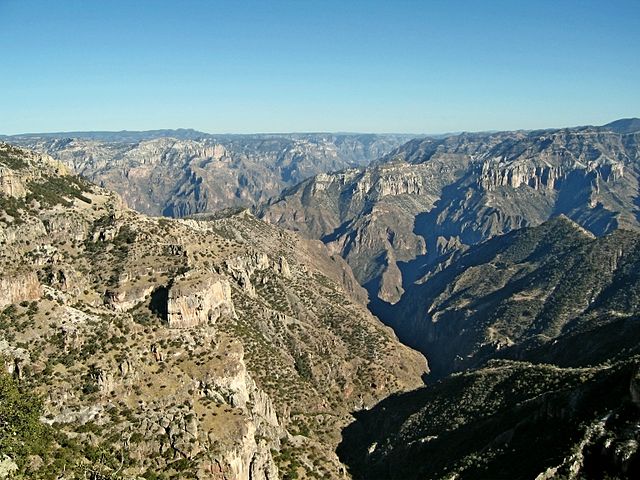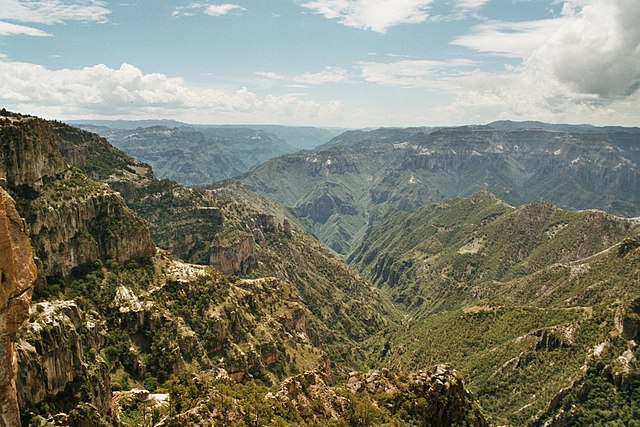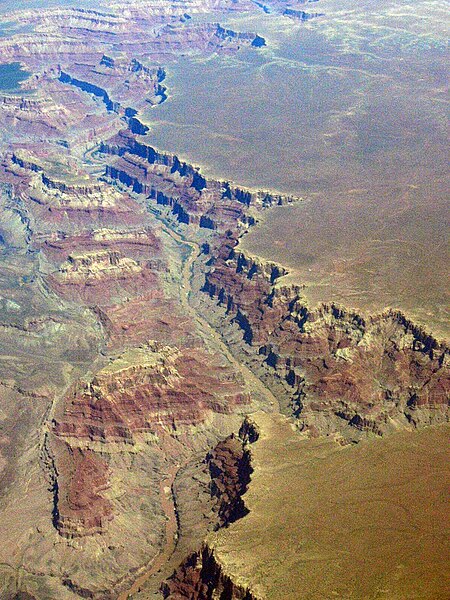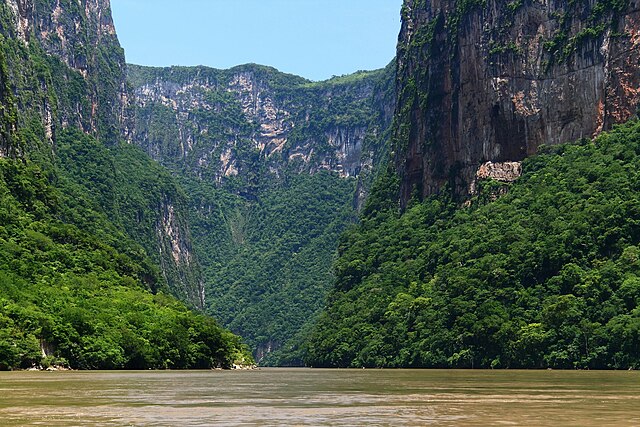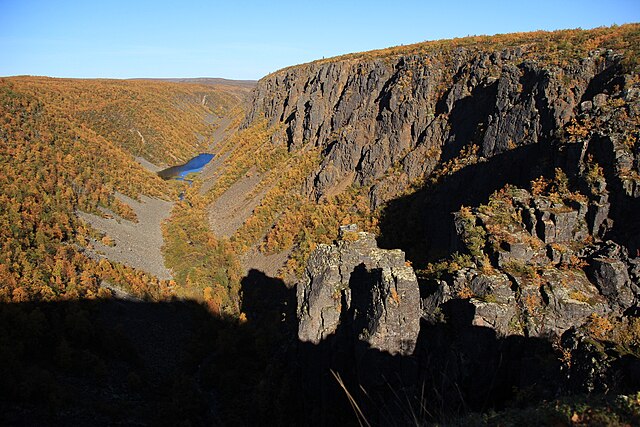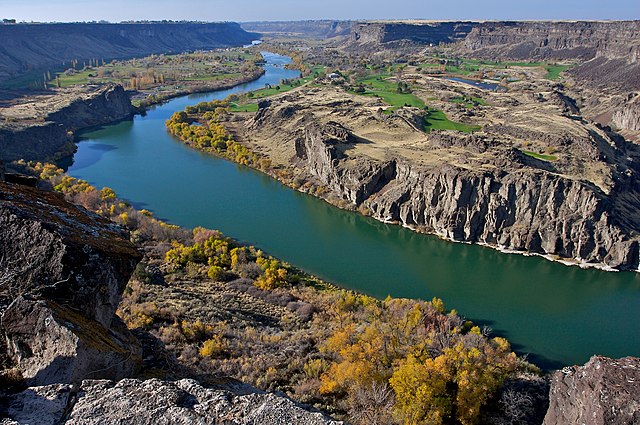Copper Canyon is a group of six distinct canyons in the Sierra Madre Occidental in the southwestern part of the state of Chihuahua in northwestern Mexico that is 65,000 square kilometres (25,000 sq mi) in size. The canyons were formed by six rivers that drain the western side of the Sierra Tarahumara. All six rivers merge into the Rio Fuerte and empty into the Gulf of California. The walls of the canyon are a copper/green color, which is the origin of the name.
Copper Canyon
Rio Urique, Copper Canyon.
The road to Batopilas descends into Copper Canyon.
A hotel at Divisadero perches on the rim of Copper Canyon. The railroad runs nearby.
A canyon, gorge or chasm, is a deep cleft between escarpments or cliffs resulting from weathering and the erosive activity of a river over geologic time scales. Rivers have a natural tendency to cut through underlying surfaces, eventually wearing away rock layers as sediments are removed downstream. A river bed will gradually reach a baseline elevation, which is the same elevation as the body of water into which the river drains. The processes of weathering and erosion will form canyons when the river's headwaters and estuary are at significantly different elevations, particularly through regions where softer rock layers are intermingled with harder layers more resistant to weathering.
The Grand Canyon, Arizona, at the confluence of the Colorado River and Little Colorado River.
Sumidero Canyon, Mexico
Kevo Canyon in Utsjoki, Finland
Snake River Canyon, Idaho

